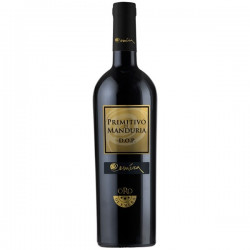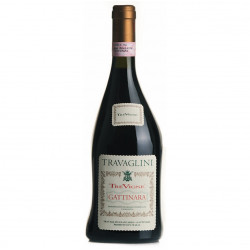Like France, Italy has a vineyard with a rich history and all the regions of the peninsula produce wine. So when we talk about typical Italian wines, it is of course difficult to make generalizations because each province of the boot has its own specificities that make them all typical. It is good to first ask the question, what is a typical Italian wine?
What is important to take into account is the representative aspect that the wine develops. A wine that is among the top Italian wines or the most expensive Italian wines is not necessarily a typical wine. The most important thing when we talk about the typical aspect of a wine is the image that it gives off to consumers. By image, we mean that the wine must be representative of a grape variety, a terroir, a region and an appellation. This vision is intimately linked to history and tradition. In the end, typicity is a gustatory and representative mark of a wine, which gives a reference to the consumer.
Here is an overview of the most typical wines of the Italian peninsula...
What are the typical wines of Italy?
Let's start our journey with the wines of Piedmont. Whether we are talking about Barolo, Barbaresco, Gattinara or other local appellations, we find here wines that we will automatically classify as typical. Nebbiolo, the emblematic grape of the region, shows its full potential here. Depending on the terroir, we will find more structured wines, others more supple, but always with the acidity and rusticity so recognizable of this variety. Further east, on the shores of Lake Garda, we make a stop with the wines of Veneto and particularly in the Valpolicella wine area with the wines of Amarone. Without a doubt a must of the typical Italian wines with its unique taste. The bunches of grapes are dried before any vinification; the objective is to obtain more concentrated grapes, which will give the wines aromatic complexity, density and a smooth and creamy touch in the mouth. In the same area and even a little further east, we find surely one of the most famous wine products of Italy and also one of the most consumed throughout the world, the Prosecco. A direct competitor of champagne due to its fame, its very affordable price and especially its quality make it an unmissable part of our trip. The bubble is always delicate and thirst-quenching. The Prosecco Emma Superiore Brut Docg from the Setteanime estate is a good example.
Known for its breathtaking landscapes, the wines of Tuscany also reveal an authenticity that goes far beyond its borders. Here we find the Sangiovese, an autochthonous grape variety that gives the wine structure and freshness to withstand the years. Other grape varieties and another style: the super-Tuscans. The history of these wines and their production dates back to the 1970s with the arrival of Bordeaux grapes, longer maturation and more new barrels. These wine styles have become internationally renowned over time and regularly rank in the top 10 of Italian wines. They are now as typical as the other more indigenous wines of the region.
A little further south, as you travel along the Adriatic coast towards the wine region of Puglia, a stop in the Abruzzo wine region is a must. Wedged between the sea and the Apennines, this vineyard is the undisputed territory of the Montepulciano, which gives the wine substance and density.
Our journey would not be complete without a compulsory passage in the south of Italy and particularly in Puglia. Known for its Trulli, small circular white houses made of dry stones and whose roofs are made with limestone slabs and lime, the wines of Puglia are also known for its indigenous grape varieties and in particular Primitivo. Aromas of black fruits and spices, powerful and rich mouth, these typical wines of the heel of the Italian boot have seen their fame go beyond the borders.
What wines do Italians drink?
As in other countries with a centuries-old viticultural past and traditions rooted in the genes like vines in the soil, Italians generally drink wines from their region without being chauvinistic.
If prosecco is the ideal companion for an aperitif, it is agreed that Italian cuisine is as rich and ancient as its vineyards, so it is quite easy to play the regional card of dishes and classic Italian wines.
How to recognize an Italian wine?
In the jungle of wine appellations, it is often difficult to find one's way. And Italy is no exception to the rule. At the top of the pyramid are the Denominations of Controlled Origin (DOC) and the Denominations of Controlled and Guaranteed Origin (DOCG), which are guarantees of superior quality and belong to the European category of DOP (Denomination of Protected Origin). Then come the typical geographical indications (IGT), which have also been replaced by the European IGP (protected geographical indications), allowing winegrowers greater flexibility, and finally the table wines.
However, as in many other countries, especially those of the New World, winegrowers tend to put forward a cuvée, a grape variety rather than a denomination. Wine being an ancestral tradition and present almost everywhere in Italy, to say that Italian wines are like this or like that is simply not possible, nor conceivable.
Our wines linked to this post
Salice Salentino Riserva Leone De Castris 2019 (15 litres)
- Highlight









